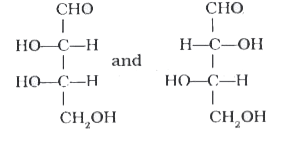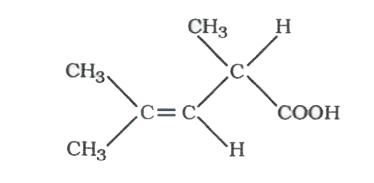Complete Solutions to MCQ (LEVEL-II) of chapter ISOMERISM IN ORGANIC COMPOUNDS of Class 12 book with complete answers and questions
| Class 12 | CHEMISTRY |
| Chapter | ISOMERISM IN ORGANIC COMPOUNDS |
| MODERN PUBLICATION | MCQ (LEVEL-II) |
| Number Of Questions | 40 |
| Academic Year | 2023-24 |
Which of the following is not an isomer of 1-Butyne?
View SolutionThe meso tartaric acid may be represented as :
View SolutionThe molecules :
`CH_(3)-underset(O)underset(||)(C)-CH_(2)-underset(O)underset(||)(C)-O-C_(2)H_(5)`
and
`CH_(3)-underset(OH)underset(|)(C)=CH-underset(O)underset(||)(C)-O-C_(2)H_(5)` are :
View SolutionKeto-enol tautomerism is observed in :
View SolutionMaleic acid and fumaric acid are the forms of :
View SolutionOnly two isomeric monochloro derivatives are possible for :
View SolutionThe total number of isomers for the compound of the formula `C_(4)H_(10)O` is :
View SolutionThe number of isomers for the compound with molecular formula `C_(2)H_(3)Cl_(3)` is :
View SolutionThe hydrocarbon containing continuous chain which is isomeric with 2-methyl-3 ethylhexane is :
View SolutionWhich of the following compounds can exist as geometrical isomers?
View SolutionThe compound `C_(4)H_(10)O` can show :
View SolutionWhich of the following alkenes with molecular formula `C_(4)H_(8)` exhibits geometrical isomerism?
View SolutionWhich of the following pairs shows isomerism?
View SolutionWhich of the following pairs does not represent a pair of isomers?
View SolutionThe phenomenon of metamerism is shown by :
View SolutionWhich of the following statements is not correct?
View SolutionWhich one of the following shows functional isomerism?
View SolutionWhich of the following is/are isomers of methyl propanoate?
View SolutionHow many isomers are possible for the compound with molecular formula `C_(4)H_(8)`?
View SolutionWhich of the following will not show geometrical isomerism?
View SolutionThe following pair of molecules represents :

View SolutionThe type of isomerism shown by :
`CH_(3)CH(OH)COOH` is :
View SolutionHow many isomeric compounds will be obtained when a disubstituted derivative of benzene is prepared from its monosubstituted derivative?
View SolutionWhich of the following compounds can exist as optical isomers?
View SolutionDichloroethylene does not show :
View SolutionIsopentane, `(CH_(3))_(2)CHCH_(2)CH_(3)` can form four isomeric monochloro derivatives. How many of these are optically active?
View SolutionWhich of the following has zero dipole moment?
View SolutionThe enolic form of acetone contains :
View SolutionWhich of the following compounds will show geometrical isomerism?
View SolutionThe compound

can exhibit :
View SolutionIn which of the following pairs, the first one is chiral and the second one is achiral?
View SolutionWhich of the following molecules is achiral?
View SolutionWhich isomer of hexane has only two different sets of structurally equivalent hydrogen atoms?
View SolutionWhich of the following compounds will exhibit cis-trans isomerism?
View SolutionWhich of the following compounds will exhibit geometrical isomerism?
View SolutionWhich of the following compounds exhibits stereoisomerism?
View SolutionA similarity between optical and geometrical isomerism is that :
View SolutionWhich of the following show geometrical isomerism?
View SolutionOf the five isomeric hexanes, the isomer which can give two monochlorinated compound is :
View SolutionThe number of structural isomers for `C_(6)H_(14)` is :
View Solution
MCQ (LEVEL-II) questions and complete solutions for chapter ISOMERISM IN ORGANIC COMPOUNDS of MODERN PUBLICATION CHEMISTRY (KANNADA ENGLISH) of Class 12